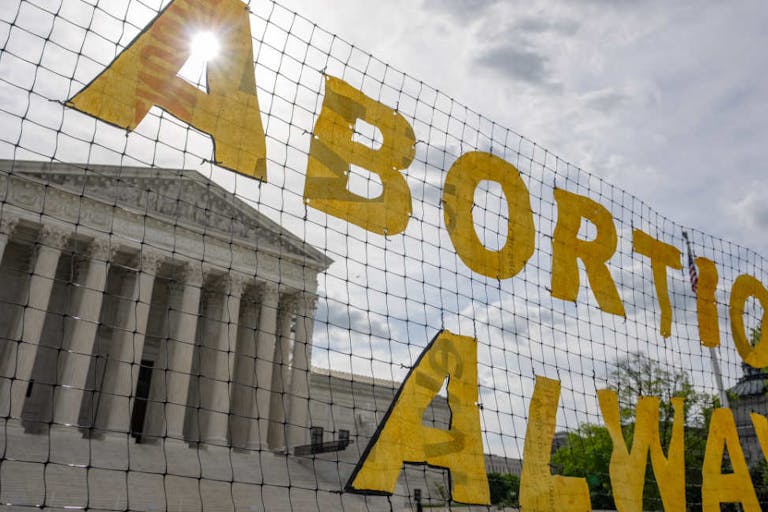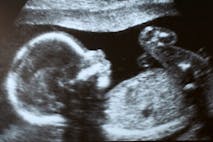
A growing number of Americans call themselves ‘pro-choice’ – but what’s really behind it?
Nancy Flanders
·
Journal of Obstetrics and Gynecology describes abortion’s toll on nurses
A quote from the American Journal of Obstetrics and Gynecology describes the emotional impact abortion has on nurses and highlights the plight of nurses who are pro-life. The quote is from the early days of legalized abortion but is still relevant. The facts of fetal development have not changed; abortion workers still have to learn to cope with seeing the features of aborted babies, hands, feet, etc.
In the 1970s, nurses and other abortion workers had to care for women who were going through labor and expelling their dead aborted children. Most 2nd and 3rd trimester abortions back then were done by poisoning the baby to death with saline solution and initiating labor. While most 2nd trimester abortions today are done by dismembering the baby with forceps in a D & E procedure, some methods of abortion still require a woman to go through labor, although the poison of choice today is an injection of digoxin (a heart medication normally used to help human beings instead of killing them) instead of saline. Seeing and handling the remains of dead babies, of course, has always made abortion stressful and even traumatic for abortion workers. But witnessing women “giving birth” to fully formed, intact, but (usually) dead children may be the most traumatic of all.
The quote begins:
Nurses. The experience of participating in any abortion procedure goes directly against the medical emphasis on the preservation of life.
To say that an abortion procedure “goes… against the preservation of life” can be construed as an admission, in a prestigious medical journal no less, that abortion kills life. Many abortionists have also admitted they know abortion takes life. The quote goes on:
On the gynecology hospital floor, amnio [saline] abortions are viewed by the nurses as the most upsetting experiences which occur and a symbol of abandonment by the medical staff. The ward nurses’ comments speak clearly to the point of being left to cope with an upset patient who delivers late at night. …
This passage refers to the way some abortionists injected the poison and then left the facility, leaving the nurses on duty to be alone with the women when endured painful labor and expelled their dead babies. After handing off their patients to the nurses, these abortionists slept, socialized, or otherwise enjoyed their free time while the nurses did the “dirty work” of disposing of the dead children and calming the sometimes distraught mothers. Today, “circuit-riding” abortionists who fly from facility to facility to do abortions also leave their patients in the recovery room, in the hands of often-untrained staff. Patient abandonment has not stopped; it has only changed form.
The nurses found the physical contact with the fetus particularly difficult; it reminded them of the “preemies” just down the hall and made them uncomfortable about their own potential future pregnancies.
It is ironic that unwanted babies were killed in one part of the hospital while medical staff in another part of the hospital were struggling to keep wanted babies of the same age alive. Dealing both with late-term abortions and premature babies, trying to kill the one and save the other created a surreal situation.
Article continues below
Dear Reader,
In 2026, Live Action is heading straight where the battle is fiercest: college campuses.
We have a bold initiative to establish 100 Live Action campus chapters within the next year, and your partnership will make it a success!
Your support today will help train and equip young leaders, bring Live Action’s educational content into academic environments, host on-campus events and debates, and empower students to challenge the pro-abortion status quo with truth and compassion.
Invest in pro-life grassroots outreach and cultural formation with your DOUBLED year-end gift!
Former abortionist Dr. Bernard Nathanson commented on this:
… I would be up on one floor, putting the hypertonic saline into a woman 23 weeks pregnant, and on another floor down, I would have someone in labor at 23 weeks, and I would be trying to salvage this baby. The nurses were caught in the same bind, the same moral whipsaw. What were we doing here, were we saving babies or were we killing them?
Abortionists Dr. Don Sloan and an anonymous abortionist quoted by pro-choice author Magda Denes also commented on this kind of scenario.
Even more recently, Dr. Lisa Harris, a Planned Parenthood abortionist caught on undercover video recorded by the Center for Medical Progress, admitted in 2008 that while she worked as a third year resident in a hospital abortion facility, she aborted a 23-week preborn baby and then immediately “rushed upstairs to take overnight call on labour and delivery.”
It should be noted that unlike workers in abortion facilities, who choose to work in the abortion industry, nurses at hospitals that perform abortions often have little choice. Although less than 10% of abortions are done in hospitals in the US today, some doctors are urging an increase in hospitals providing abortion. Pro-life nurses who are unlucky enough to work at a hospital that suddenly starts doing abortions after a merger, takeover, or change in policy often face the threat of losing their jobs if they refuse to assist.
Sometimes these nurses end up in court. In 2011, 12 nurses took a New Jersey hospital to court for making them participate in abortions under penalty of being fired. The hospital settled with them, allowing them their right to refuse. More recently, a pro-life nurse in Sweden was ordered to help with abortions at her hospital or lose her job.
Live Action News is pro-life news and commentary from a pro-life perspective.
Contact editor@liveaction.org for questions, corrections, or if you are seeking permission to reprint any Live Action News content.
Guest Articles: To submit a guest article to Live Action News, email editor@liveaction.org with an attached Word document of 800-1000 words. Please also attach any photos relevant to your submission if applicable. If your submission is accepted for publication, you will be notified within three weeks. Guest articles are not compensated (see our Open License Agreement). Thank you for your interest in Live Action News!

Nancy Flanders
·
Analysis
Angeline Tan
·
Analysis
Cassy Cooke
·
Politics
Madison Evans
·
Opinion
Nancy Flanders
·
Investigative
Carole Novielli
·
Guest Column
Sarah Terzo
·
Abortion Pill
Sarah Terzo
·
Guest Column
Sarah Terzo
·
Guest Column
Sarah Terzo
·
Guest Column
Sarah Terzo
·